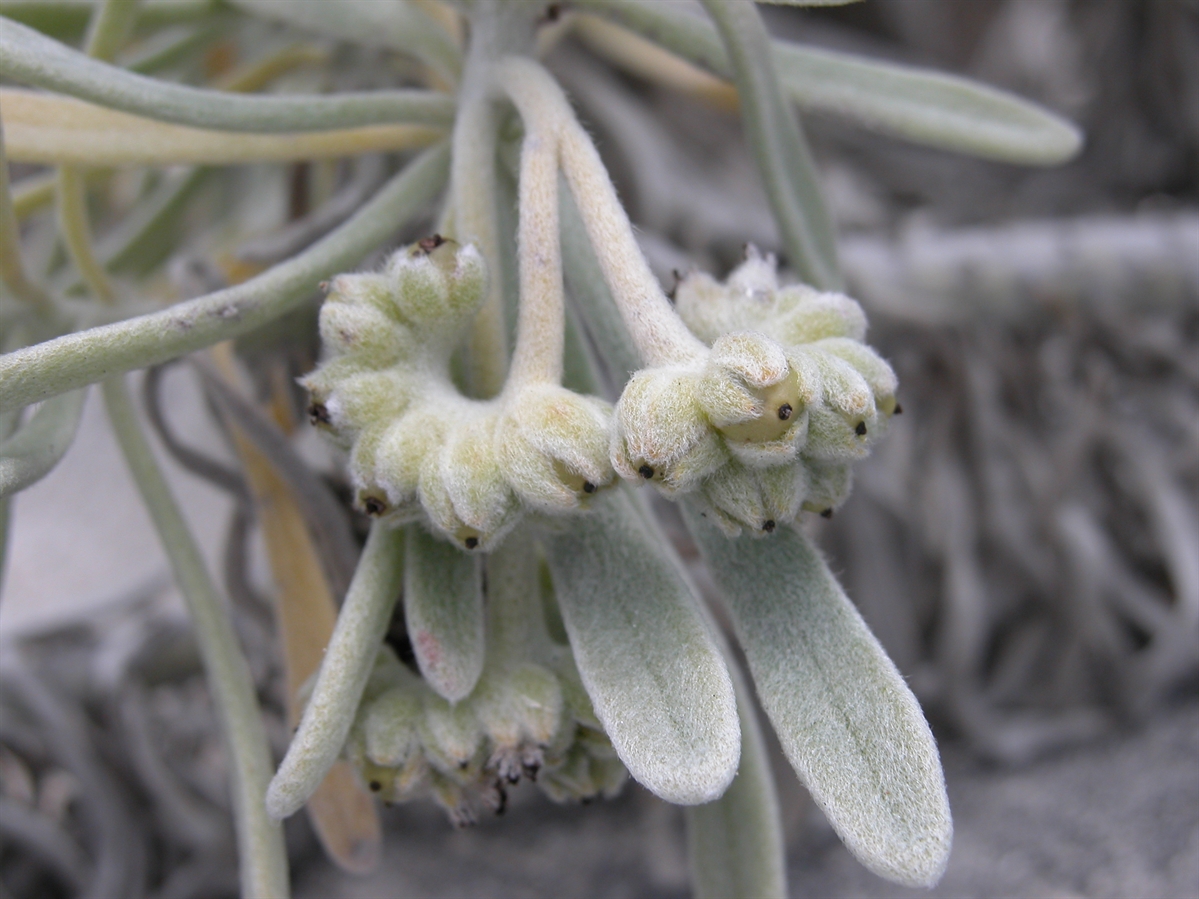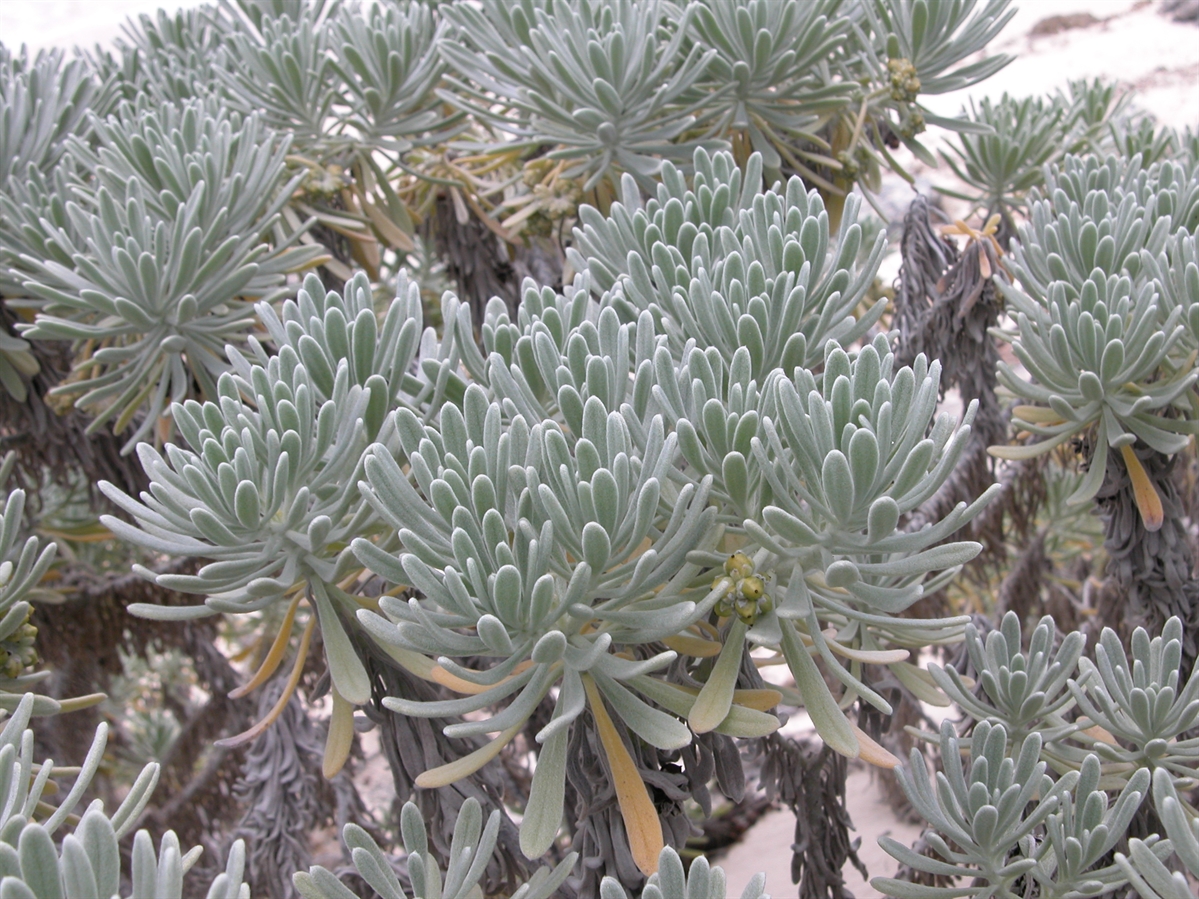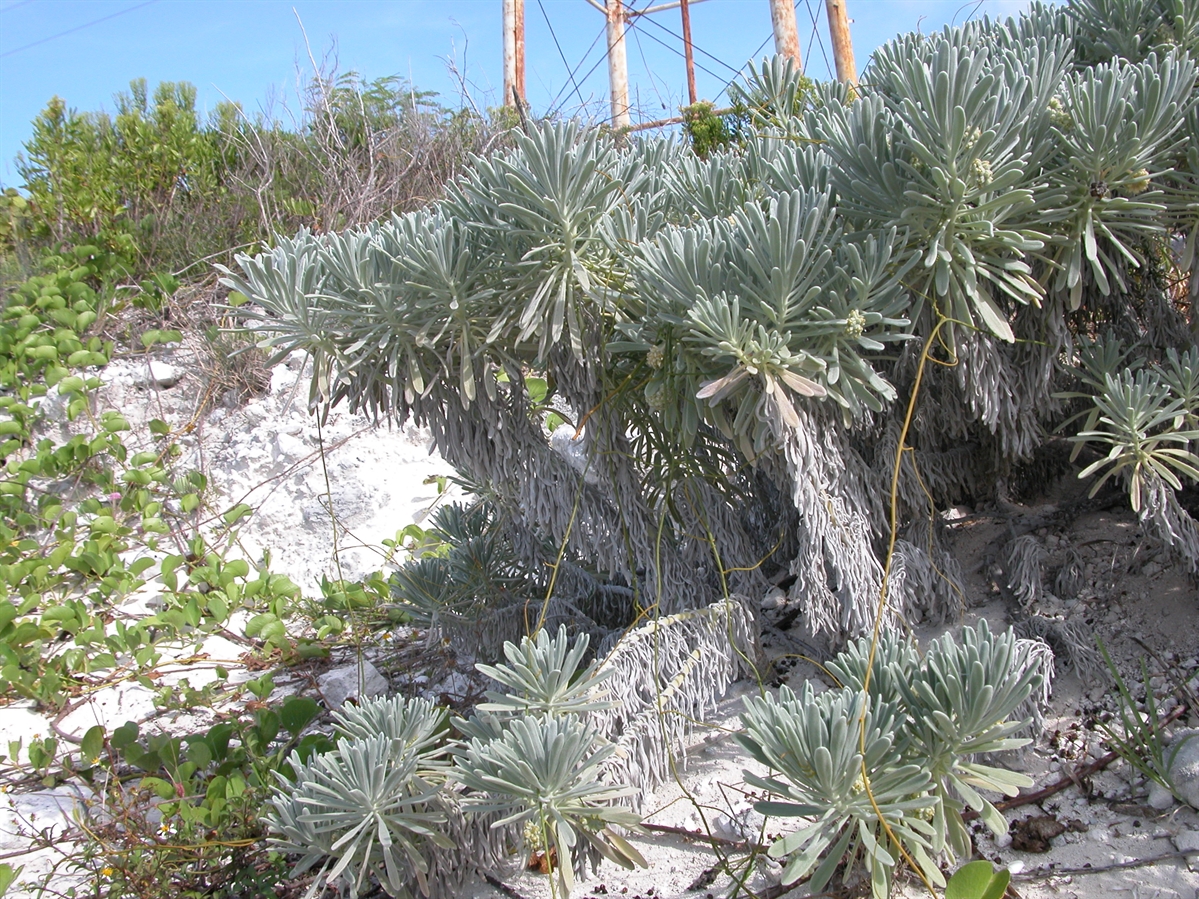Habit: Tournefortia gnaphalodes grows as a woody perennial to 2 meter in height. The vegetation is hirsute causing the vegetation to look gray. The leaves are arranged alternately, to 10 cm in length with an entire margin and acute apex.
The complete, perfect, slightly zygomorphic flowers are arranged in 2 rows along the rachis of the terminal, scorpoid cymes, The calyx has 5 unfused green petals. The corolla has 5, fused, white petals with a pinkish center, with one lobe slight larger than the others. There are 5 stamens fused to the base of the corolla. The ovary is superior with 4 locules. The fruit is a capsule.
Habitat: Tournefortia gnaphalodes grows in Dunes.
Distribution: Tournefortia gnaphalodes occurs on all island groupings in the Lucayan Archipelago, Florida, the entire Caribbean region, and Central America.
Medicinal/Cultural/Economic usage: Tournefortia gnaphalodes is not known to be used medicinally in the Lucayan Archipelago.



